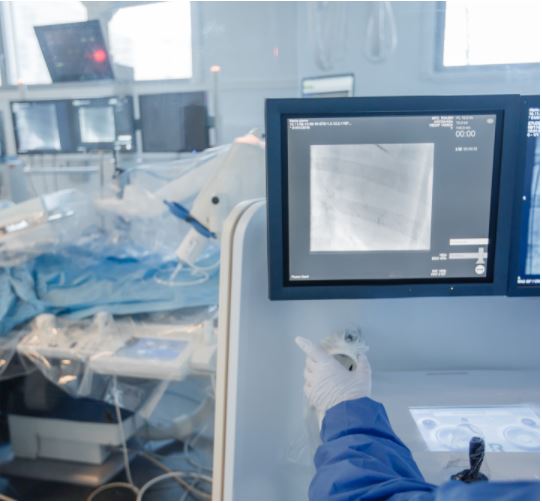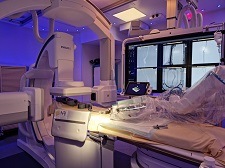
R-One™ robotic assistance platform was designed using a global approach to the needs of interventional cardiology. It integrates flawlessly with the interventional protocol. R-One™ is designed to provide physicians with reliable, precise assistance during procedures and enhance movements creating better interventional conditions, in particular by being totally protected from x-rays.
R-One™ comprises two core elements:
The architecture of the medical robot R-One™ allows to use two guidewires and a stent or balloon catheter. It is compatible with market leading devices (guidewires, stent/balloons, imaging systems, etc.). It takes just a few minutes to install and integrates flawlessly with the intervention protocol, without adding any additional steps.

In addition to its anthropomorphic nature, replicating hand movements identically, R-One™ offers a greater level of freedom of movement than a manual procedure (repeatability, one-handed guidance, etc.). This presents new movement possibilities like continuous rotation (Easy-Loop®).



Innovation is at the heart of Robocath’s strategy. New patents are regularly filed for new technologies that will be used in future medical specialties. Robocath’s aim is to guarantee the same access to treatment for all through the development of remote interventions, including the remote treatment of vascular emergencies such as strokes. This model will provide better care for this type of pathology, more quickly and under better conditions. Research is currently underway to develop robotics platforms for peripheral vascular and neurovascular procedures